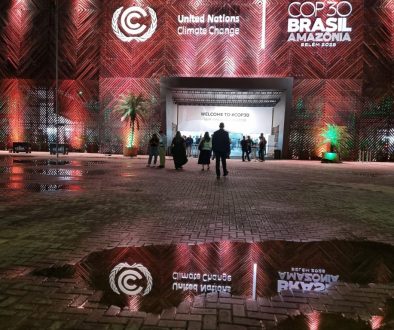Use Paper to Reduce Your Carbon Footprint
No, that is not a typo in the headline. It is a fact.
In the current age of digital communication, it is important to consider how our choice of media and communications impacts on our carbon footprints.
“While there is no doubt that technology offers immediacy and convenience, we need to take a careful look at the lifecycles of both digital and paper. Too often there are claims – many of which are unsubstantiated – that market digital as ‘greener’ than print,” says Jane Molony, executive director of the Paper Manufacturers Association of South Africa (PAMSA).
Save the planet and go digital. Go green, read it on screen. Consider the environment before printing this email. “Many of us have inherited a mindset that paper is bad for the environment, that its production kills trees,” states Molony. “But few would believe that responsible paper manufacturing, consumption and recycling is ‘green’.”
We need to start considering both sides of the story.
The paper story
South African paper producers source wood from sustainably farmed plantation trees, as well as recycled paper and sugar cane fibre. To sustain production, less than 10% of the plantations are harvested annually. The timber is chipped, pulped and paper is made. In the same year, saplings are planted – an average of 262,000 new trees per day.
Mitigating impact
Just like most industries, paper manufacturing has an impact on the environment, but this mitigated in a number of ways. Perhaps the most significant is the carbon sequestration of plantations from where the wood is sourced. The 762,000 hectares of South Africa’s commercial timber plantations absorb 20 million metric tonnes of carbon dioxide (CO2) and greenhouse gases (GHGs) annually. Similarly, these trees release some 15 million tonnes of life-giving oxygen per year.
The paper industry invests heavily in biomass-based renewable energy, emission reduction and water recycling initiatives, biodiversity conservation at plantation level as well as the promotion of paper recovery and recycling.
Once paper is produced, the carbon is locked up and kept out of the atmosphere – in copier paper, books, printed documents, cardboard boxes – to name a few.
By recycling paper, we keep this carbon locked up. Destined for landfill – a compact, anaerobic environment – paper (mixed with other waste) will degrade and release gases such as methane which is 25 times more potent than CO2.
The digital (dark) side
Computers, servers and digital devices are made from, in most cases, non-renewable materials and require electricity to function. Many components are imported too. Electronic documents are stored in data centres and server rooms which generate heat and further require air-conditioning to regulate temperature.
Researchers are only beginning to study the environmental effects of e-mail, digital data storage, internet searches and social networking. “We don’t know the environmental impact of saving a document on a server for 10 years or more. And we have no idea of the impact of extracting finite resources to make electronic devices that cannot easily be recycled safely and practically,” says Hans Wegner, chief sustainability officer of the National Geographic Society[i].
Consider the unseen
In his report Print vs Digital Media: False Dilemmas and Forced Choices, Don Carli, a senior researcher at the Institute of Sustainable Communication, says: “[The] invisible ‘grey energy’ used to manufacture digital technologies and the toxic ‘e-waste’ associated with electronics are largely out of sight and out of mind. ‘Dark data’ is also exchanged between computers but never seen by human eyes.”
According to a study by the Centre for Energy-Efficient Telecommunications at University of Melbourne, by 2015 wireless ‘cloud’ infrastructure will consume as much as 43 terawatt-hours of electricity worldwide while generating 30 megatons of CO2 – the equivalent of 4.9 million vehicles worth of carbon emissions.
Be responsible users of both
“Digital is here to stay and we have nothing against that,” assures Molony. “But paper has its benefits too. Both have their place and fulfill different needs. We must use our chosen means of communication responsibly.”
Paper is a renewable resource and we should look at its entire lifecycle when calculating its carbon footprint. “It is important to source paper from certified producers. In South Africa, the Forest Stewardship Council (FSC®) mark of certification is one that businesses and consumers should look for,” explains Molony. “Educate your colleagues about the importance of responsible paper consumption and recycling, especially those overseeing procurement and waste management.”



